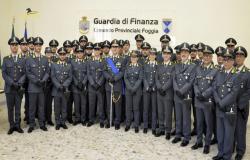The Vanguard in the Desert: an untold story. The exhibition “Uzbekistan. The Avant-garde in the Desert” presents for the first time to the Italian and Western public an extraordinary and still little-known page of the art of the first half of the 20th century. The exhibition project, which is held in the prestigious venue of Ca’ Foscari Esposizioni in Venice, is promoted and supported by the Uzbekistan Cultura Foundation and is curated by Silvia Burini and Giuseppe Barbieri, directors of the Center for Studies on Russian Art of Ca’ Foscari University Venice, assisted by a prestigious international scientific committee; brings together, in a chronological period from the end of the nineteenth century to 1945, approximately 100 works (mainly paintings on canvas and paper, to which are added emblematic finds of the Uzbek textile tradition) coming from the National Museum of Tashkent and the Savitsky Museum of Nukus, what the international press has been referring to for some years, not inappropriately, as “the Louvre of the desert”.
It is the first exhibition in history to establish precise relationships between the two most important art collections of the twentieth century present in Uzbekistan: this is a fundamental element for understanding the depth of an artistic event like this, but it is not the only novelty of the exhibition. Until now, in fact, even the most innovative works and artists working in Central Asia in the third and fourth decades of the twentieth century had been thought of as a peripheral and marginal declination of the great turning point brought about in the Russian capitals from 1898 to 1922 by an extraordinary generation of artists ( Falk, Kandinsky, Ekster, Lentulov, Rodchenko etc.). What can instead be observed is the genesis and subsequent development of an authentic national school, of a fascinating and unique “Avanguardia Orientalis”. An extraordinary result, which was only possible by combining the collection of the National Museum of Tashkent (where important masterpieces of the Russian avant-garde, including 4 works by Kandinsky, were already present at the beginning of the 1920s) with that of Nukus: from on the one hand the anticipated reception of a matrix of great modernity, which also takes up and spreads all the experiences of Western Europe, on the other its transformation into a totally original, multi-ethnic and interdisciplinary language.
The subtitle of the exhibition is “The form and the symbol”. The first term refers to the influence exerted on the painting of Central Asia by the Russian historical avant-garde through the works partly sent to Tashkent, partly collected by Savicsky in Nukus: a selection of signs of extraordinary quality, never previously sent outside the borders of Uzbekistan, including 4 works by Kandinsky (two oils and two drawings on paper): Lentulov, Maškov, Popova, Rodchenko, Rozanova are just some of the protagonists of a scenario, that of the birth of abstractionism, long recognized as one of the foundations of twentieth-century world art.
Added to these is a wide selection of works from the Avanguardia Orientalis. They are the result of a very profound cultural and artistic dialogue: on the one hand the centuries-old traditions of sparkling silks and the refined palette of architectural decorations which reflect the colors of the sky and natural scenery, the gait of animals and the sounds of a long story musical; on the other, the no longer postponable need for a new pictorial code, never previously experienced in the Islamic East. It is precisely this relationship that gives a symbolic depth to the works on canvas and paper that are exhibited.
It is also an intercultural dialogue, which brings together Uzbek, Kazakh, Armenian, Eastern Russian and Siberian artists, almost all of whom trained in Moscow and Petrograd, but all rooted in a land that they discover and in which they choose to live and work. The Avanguardia Orientalis is therefore an inclusive Avant-garde, of comparison and collaboration, of meetings and common ancestry.
It is an often adventurous story, which the Venice exhibition has chosen to unfold by placing pictorial and graphic signs and those of the applied arts on a level of equal dignity, with a selection of textile artefacts which on the one hand reveal unsuspected consonances with modern frontiers of art, and together they transmit, on the other, a profoundly symbolic cultural heritage, linked to ancient cults and millenary practices.
The Ca’ Foscari exhibition is also an opportunity to draw international attention to the figure and work of Igor Savicsky.
The legendary figure of Savicsky is the basis of the journey, which has among its objectives also that of making an audience of not only professionals aware of an essential personality for preserving and passing on many aspects, not only of 20th century art. , but of the overall Cultural Heritage of Uzbekistan. He was responsible, in the middle of the desert in Karakalpakstan, in the north-western part of Uzbekistan, for the establishment of one of the largest collections of Russian avant-garde art in the world, second in terms of quantity only to that of the Russian Museum of St. Petersburg, and almost the only testimony of one of the most important artistic movements in Russian history of the 20th century.
Archaeologist by training, painter for pleasure and talent, collector by happy obsession, from the end of the 1950s until the 1970s Savicsky collected thousands of archaeological finds and artefacts of craftsmanship and popular art from the region in Nukus, placing them alongside over time to many other thousands of paintings and graphic sheets from Uzbekistan and the Soviet Union, in a very current concept of a “synthetic museum”, which the exhibition takes up and discusses in the extensive Electa catalogue, as well as in the arrangement of the works and in the original Venetian multimedia setup.
Savicsky traveled tirelessly to collect thousands of works of art which in the meantime had also disappeared from the horizon and from the memory of the studios: he tracked them down in the artists’ ateliers or purchased them from widows and heirs, in the “deserts” of Stalinist and post-Stalinian rejection for the modernity of the avant-garde of the early twentieth century. He kept at the center of his interests the works of artists who had lived and worked in Turkestan, where he himself had been evacuated during the Second World War. He revived the roots of modern art in Uzbekistan in the Nukus desert.
Savicsky was also responsible for the understanding and collection of an important, and almost unpublished, group of pictorial and graphic works from the Amaravella Group (the Sanskrit term of uncertain etymology, probably relating to “expanding space”), involved , in a short space of years, between 1923 and 1928, to visually translate, in the wake of Nikolai Roerich’s lesson, the crucial issues of the cosmist theories widespread in the Russian world at the time. The Nukus Museum is the main container (and among the very few in the world) of the Group’s works, which will be exhibited for the first time at Ca’ Foscari.
© All rights reserved








